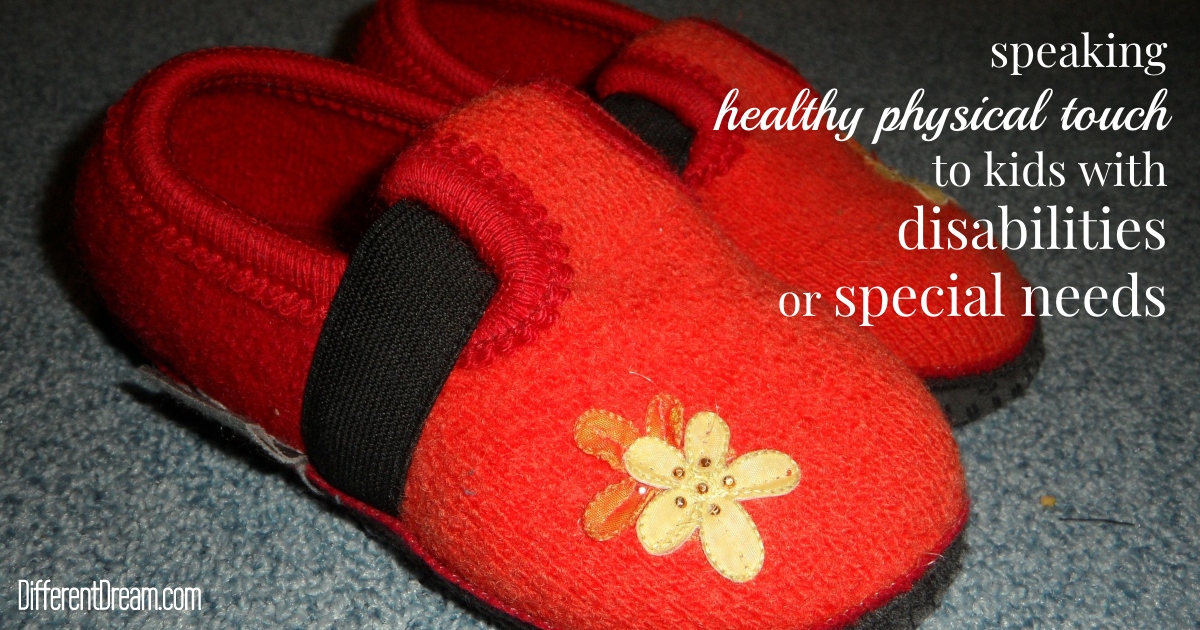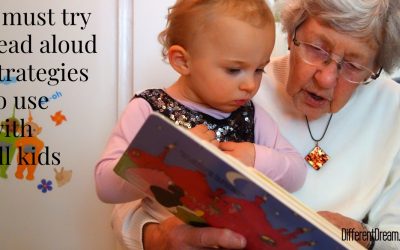Speaking Healthy Physical Touch to Kids with Special Needs

Speaking healthy physical touch to kids with special needs deserves its own post in this series for three reasons. First, this subject comes with a caution. Physical touch is not always loving in our broken world. As parents of vulnerable children, we must directly teach them the difference between good and bad touch. We must also protect them by inviting only trusted people into our kids’ worlds, watch over them diligently, and keep the doors open at all times.
The second reason is that many children with disabilities and special needs deal with sensory processing disorder (SPD). SPD falls into 2 categories.
- Sensory seekers are under-sensitive to sensory input and look for more stimulation. A sensory seeking child doesn’t want just a hug. He wants a bear hug.
- Sensory avoiders experience sensory input intensely. They avoid loud noises, strange textures, bright lights, unusual flavors and more.
The third reason is that speaking physical touch to our kids with disabilities has a broader scope that you might think. The book, Sharing Love Abundantly in Special Needs Families: The 5 Love Languages® for Parents Raising Kids with Disabilities upon which this series is based, provides a plethora of surprising ways of speaking healthy physical touch to kids. Here are a few favorites:
- Putting hands on a child’s shoulders during conversation to help her focus on what’s important and ignore distractions.
- A foot or hand rub.
- High fives, fist bumps, and handshakes.
- Hold hands when praying before meals and at bedtime.
- A basket of fidget toys to use during homework or church services.
- Gifts like a fuzzy slippers, chew toys, and clothes without tags.
- Holding a child close after administering discipline.
More ideas for speaking healthy physical touch to kids with disabilities and special needs and stories about the caregiving families who use them can be found in chapter 6 of Sharing Love Abundantly in Special Needs Families: The 5 Love Languages® for Parents Raising Kids with Disabilities.
Stop by in June for the next post in the series. It’s about how to use the love languages with typical siblings in caregiving families.
Other articles in this series:
- The Love Languages and Special Needs Families: A Good Combination
- Basic Love Language Concepts to Ease Stress and Increase Joy in Caregiving Families
- Threats to Caregiving Marriages and How To Fight Them
- Love Is a Child’s First Language
- Determining the Love Language of a Child with Special Needs or a Disability
- Ways to Speak Words of Affirmation and Quality Time to Kids with Special Needs
- Ways To Speak Gifts and Acts of Service to Kids with Special Needs
- Using the Love Languages with Siblings of Kids with Special Needs and Disabilities
- Extended Family Members Can Use the Love Languages to Encourage Caregiving Parents
- Communicating Your Child’s Love Language to Medical Professionals
- Communicating Your Child’s Love Language to Educators
Do you like what you see at DifferentDream.com? You can receive more great content by subscribing to the monthly Different Dream newsletter and signing up for the daily RSS feed delivered to your email.
By Jolene
Jolene Philo is the author of the Different Dream series for parents of kids with special needs. She speaks at parenting and special needs conferences around the country. She’s also the creator and host of the Different Dream website. Sharing Love Abundantly With Special Needs Families: The 5 Love Languages® for Parents Raising Children with Disabilities, which she co-authored with Dr. Gary Chapman, was released in August of 2019 and is available at local bookstores, their bookstore website, and at Amazon.
Subscribe for Updates from Jolene
Related Posts
Five Read Aloud Tips for Families
These five read aloud tips can have an impact on every child, whatever their abilities, because God created us to learn through stories.
Wisdom from Caregiving Parents about the Love Languages and More
The final chapter of Sharing Love Abundantly is full of wisdom from caregiving parents. Here are a few nuggets to whet your appetite.
Communicating Your Child’s Love Language to Educators
Communicating your child’s love language to educators can be as simple as learning to “talk teacher.” Here are 3 ways to do it.






0 Comments